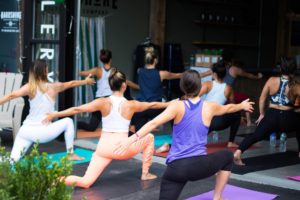Did you know that there are more than 600 muscles in the human body? These muscles are put into groups. When you work out, you want to make sure that you are targeting all of the major muscle groups. This can help ensure that you are getting the most out of your workout, and helping to prevent injuries. In this blog post, we will introduce you to some of the major muscle groups in your body. We will discuss what each group does, and provide exercises for each one. Let’s get started!
The first muscle group is the smooth muscles, which are found in your organs and other areas of your body. Smooth muscles help to control various activities including digestion, respiration, circulation, and more. Stretching is the best way to support your smooth muscle group. Yoga is particularly good for your smooth muscles!
The second muscle group is the skeletal muscles. These are responsible for movement and form the basis of our bodies’ structure. Resistance training is your best bet to strengthen these muscles. Forms of resistance training include weightlifting, resistance bands, and exercises that use your own body weight to build muscle (think planks, squats, etc.).
The third muscle group is the cardiac muscles; these make up your heart and help it pump blood throughout your body. Cardiac exercises you can do include aerobic activities such as running, swimming, and cycling. Basically, anything that gets your heart rate up, improves your cardiac muscle tone.
An interesting and important group of muscles make up your core. These include your pectoralis major (chest), rectus abdominis (abdomen), external oblique (side abdominal muscles), transverse abdominis (deep abdominal muscles), and internal oblique (deep side abdominal muscles). Core exercises you can do to target these muscles include crunches, planks, bird-dog poses, and bridges. Maintaining a strong core is essential if you are prone to back pain!
Finally, there are a few different terms you should know when it comes to working out your muscles. Muscle size refers to how large the muscle appears after exercise, such as vastus, maximus, longus, minimus, and brevis. Muscle shape refers to how the muscle looks, such as triangular (deltoid), rhomboid, wide (latissimus), round (teres), and trapazoid. The muscle direction of fibers defines which way the fibers are running in a particular muscle, such as straight, across, diagonally, or circular, and helps determine how a specific exercise will affect the muscles. Finally, location determines where the muscles are located on the body, such as the chest (pectoralis), the rump (gluteus), the arm (brachii), as well as above (supra-), below (infra-), under or beneath (sub-), and lateral (lateralis).
Now that you have a better understanding of the major muscle groups in your body, and the terms related to muscle size, shape, direction of fibers and location, it’s time to get started with your exercise routine! With some dedication and effort, you can easily strengthen these muscles and benefit from all of the wonderful health benefits that come along with it. Work those muscle groups!







